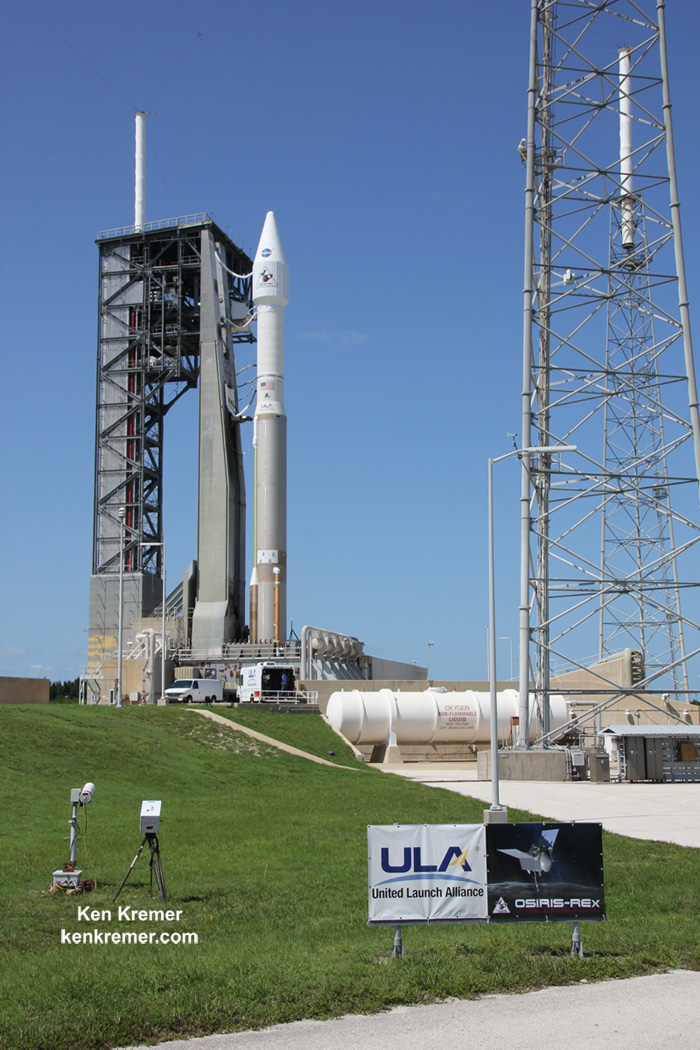
KENNEDY SPACE CENTER, FL – Today is ‘Earth Departure Day’ for OSIRIS-REx, NASA’s first mission to snatch “pristine materials” from the surface of a near Earth asteroid named Bennu and deliver them back to Earth in seven years on a mission to unlock mysteries on the formation of our Solar System and ourselves 4.5 Billion years ago.
The 4.5 Billion mile roundtrip ‘Journey to Bennu and Back’ begins today. All systems are GO for a spectacular dinner-time blastoff of NASAs OSIRIS-REx spacecraft from the Florida Space Coast.
Earth departure for NASA’s Origins, Spectral Interpretation, Resource Identification, Security – Regolith Explorer (OSIRIS-REx) spacecraft from Space Launch Complex 41 at Cape Canaveral Air Force Station on a United Launch Alliance Atlas V rocket is slated for shortly before sunset this evening, Thursday, September 8 at 7:05 p.m. EDT.
Excited spectators are filling local area hotels for this once in a lifetime mission to ‘Bennu and Back.’
Bennu is a small, carbon-rich asteroid – meaning it contains significant amounts of organic molecules, the stuff of which life is made.
Bennu is only about a third of mile in diameter, measuring 500 meters or 1,614 feet across and it crosses Earth’s orbit around the sun every six years.
You can watch the sure to be a spectacular launch live in person here in sunny Florida or live via a choice of webcasts.
NASA’s OSIRIS-REx launch coverage will be broadcast on NASA TV beginning at 4:30 p.m. EDT Sept. 8, as well as on a ULA webcast.
You can watch the launch live at NASA TV at – http://www.nasa.gov/nasatv
You can watch the launch live at ULA at – www.ulalaunch.com
Today’s weather forecast remains very promising and is currently 80% GO for favorable conditions. The only concern is for cumulus clouds.
There are 3 opportunities in a row to launch OSIRIS-Rex.
In case of a delay 24 or 48 hour delay, the forecast drops only slightly to 70% GO.
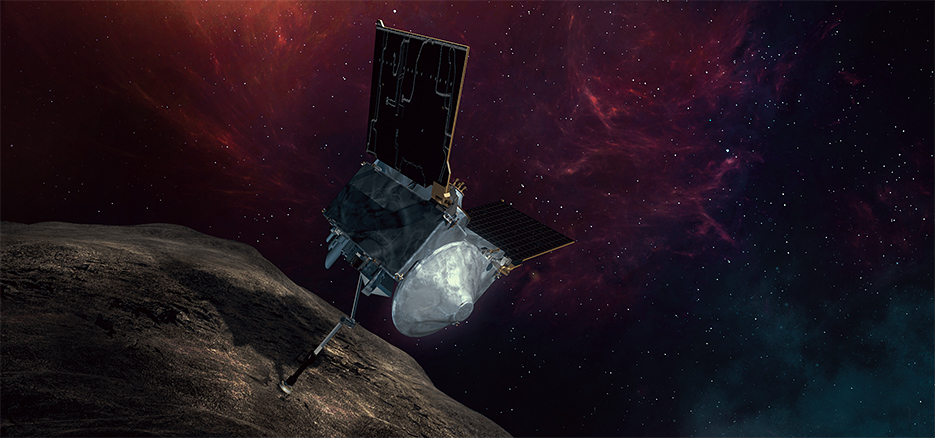
The United Launch Alliance Atlas V rocket and OSIRIS-REx spacecraft were rolled out some 1800 feet from the Vertical Integration Facility (VIF) – where the rocket is assembled- to launch pad 41 starting at about 9 a.m. yesterday morning September 7, 2018.
Watch this OSIRIS-Rex trailer from NASA Goddard illustrating the probes Earth departure launch phase:
NASAs OSIRIS-REx spacecraft is on a mission to explore asteroid Bennu and return a sample to Earth. The OSIRIS-REx launch window opens on September 8, 2016, when the spacecraft begins its two-year journey to Bennu aboard an Atlas V rocket at Cape Canaveral, Florida. After arriving at Bennu in 2018, OSIRIS-REx will spend over a year exploring the asteroid before approaching its surface to grab a sample. This pristine material, formed at the dawn of the solar system, will be returned to Earth in 2023, providing clues to Bennus origins and our own. Credit: NASA’s Goddard Space Flight Center/David Ladd
OSIRIS-REx will gather rocks and soil and bring at least a 60-gram (2.1-ounce) sample back to Earth in 2023. It has the capacity to scoop up to about 2 kg or more.
The mission will help scientists investigate how planets formed and how life began. It will also improve our understanding of asteroids that could impact Earth by measuring the Yarkovsky effect.
Bennu is an unchanged remnant from the collapse of the solar nebula and birth of our solar system some 4.5 billion years ago.
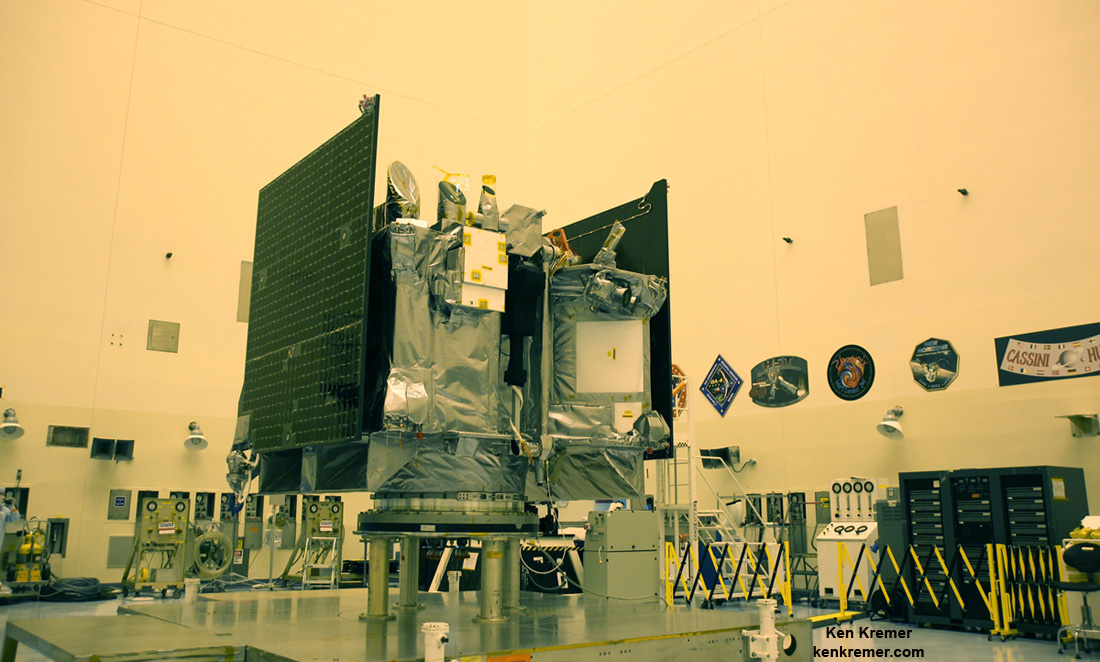
It was chosen as the target because it is little altered over time and thus ‘pristine’ in nature.
Bennu is a near-Earth asteroid and was selected for the sample return mission because it could hold clues to the origin of the solar system and host organic molecules that may have seeded life on Earth.
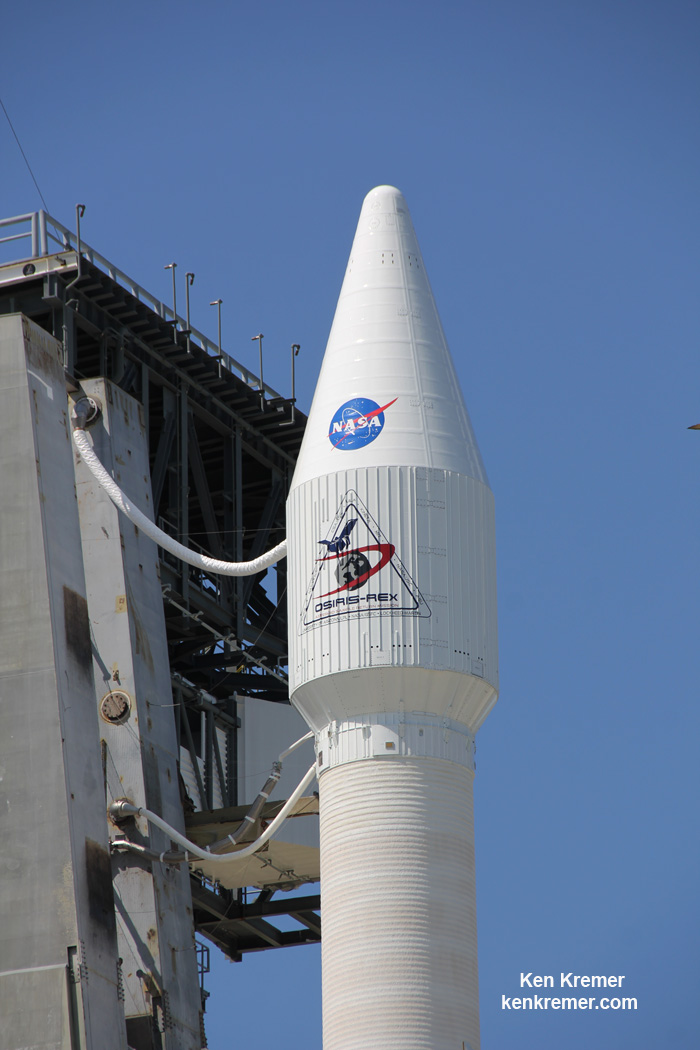
The 189 foot tall ULA Atlas V rocket is launching in the rare 411 configuration for only the 3rd time on this mission – which is the 65th for the Atlas V.
The Atlas 411 vehicle includes a 4-meter diameter payload fairing and one solid rocket booster that augments the first stage. The Atlas booster for this mission is powered by the RD AMROSS RD-180 engine and the Centaur upper stage was powered by the Aerojet Rocketdyne RL10C-1 engine.
The RD-180 burns RP-1 (Rocket Propellant-1 or highly purified kerosene) and liquid oxygen and delivers 860,200 lb of thrust at sea level.
The strap on solids deliver approximately 500,000 pounds of thrust.
The solids will be jettisoned about 2 minutes after liftoff.
OSIRIS-REx will return the largest sample from space since the American and Soviet Union’s moon landing missions of the 1970s.
OSIRIS-REx is the third mission in NASA’s New Frontiers Program, following New Horizons to Pluto and Juno to Jupiter, which also launched on Atlas V rockets.
NASA’s Goddard Space Flight Center in Greenbelt, Maryland, is responsible for overall mission management.
OSIRIS-REx complements NASA’s Asteroid Initiative – including the Asteroid Redirect Mission (ARM) which is a robotic spacecraft mission aimed at capturing a surface boulder from a different near-Earth asteroid and moving it into a stable lunar orbit for eventual up close sample collection by astronauts launched in NASA’s new Orion spacecraft. Orion will launch atop NASA’s new SLS heavy lift booster concurrently under development.
Watch for Ken’s continuing OSIRIS-REx mission and launch reporting from on site at the Kennedy Space Center and Cape Canaveral Ait Force Station, FL.
Stay tuned here for Ken’s continuing Earth and planetary science and human spaceflight news.
Ken Kremer
………….
Learn more about OSIRIS-REx, InSight Mars lander, SpaceX missions, Juno at Jupiter, SpaceX CRS-9 rocket launch, ISS, ULA Atlas and Delta rockets, Orbital ATK Cygnus, Boeing, Space Taxis, Mars rovers, Orion, SLS, Antares, NASA missions and more at Ken’s upcoming outreach events:
Sep 8-9: “OSIRIS-REx lainch, SpaceX missions/launches to ISS on CRS-9, Juno at Jupiter, ULA Delta 4 Heavy spy satellite, SLS, Orion, Commercial crew, Curiosity explores Mars, Pluto and more,” Kennedy Space Center Quality Inn, Titusville, FL, evenings
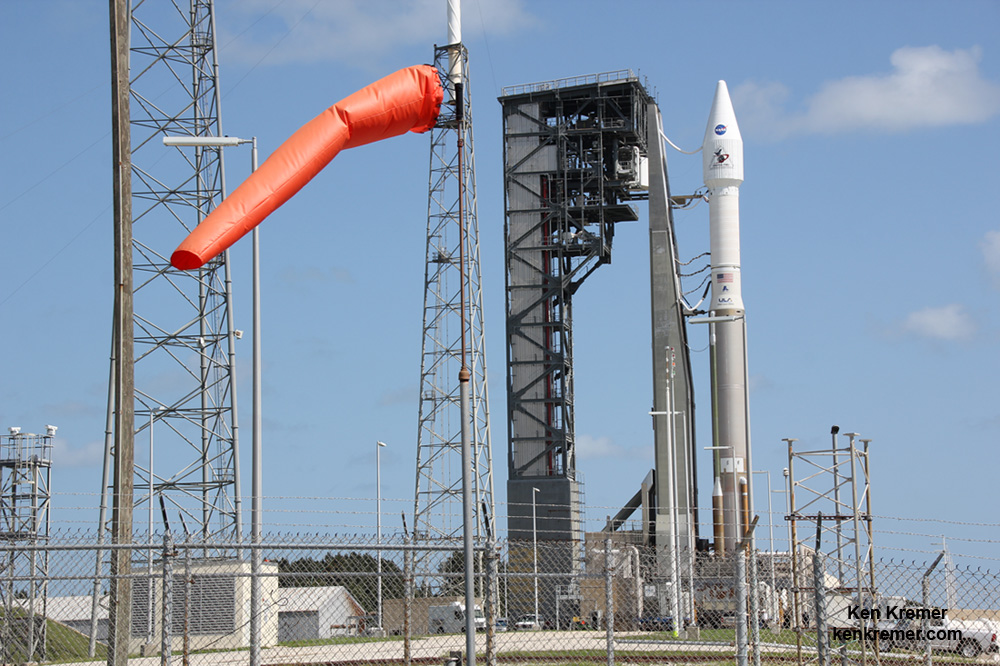
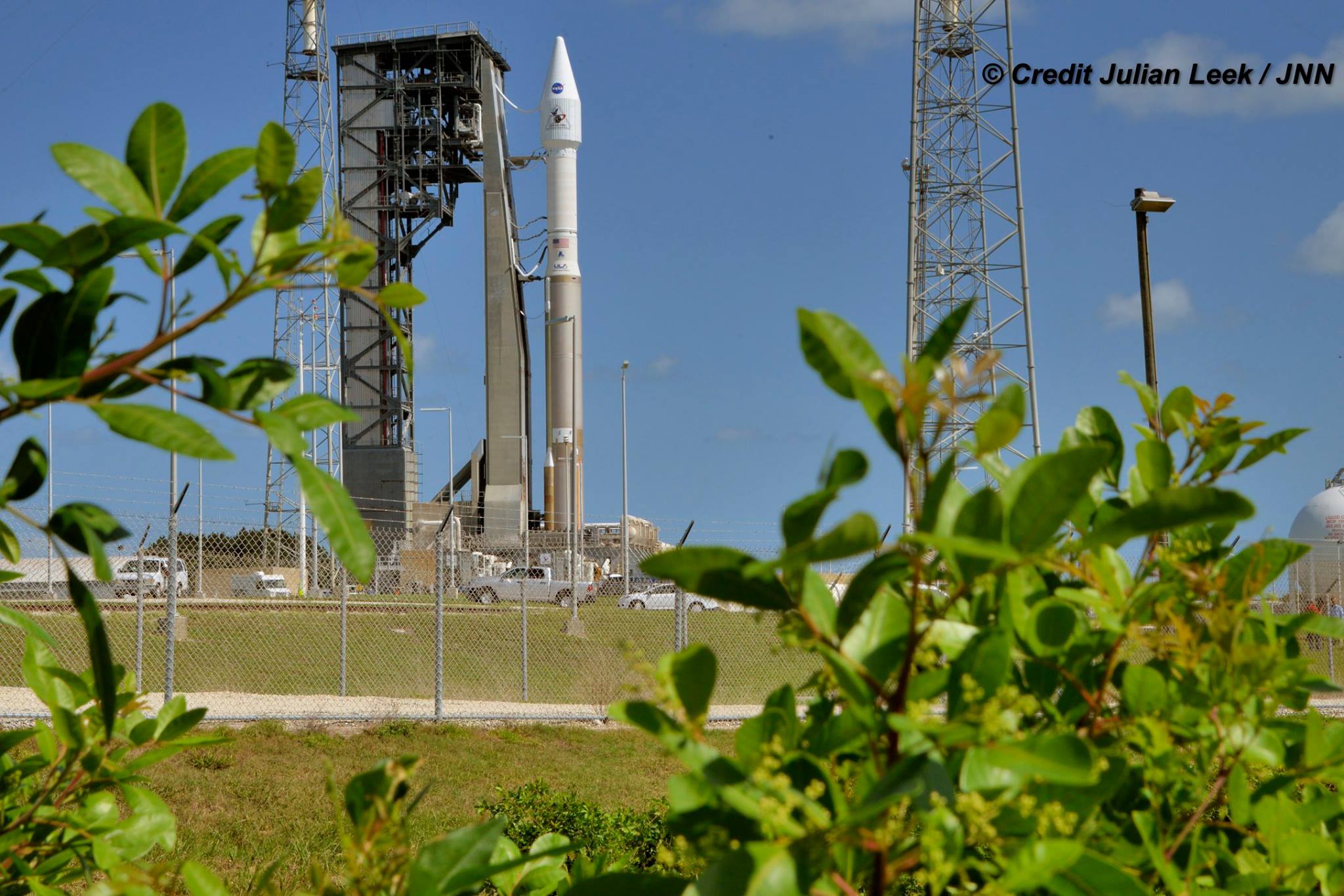

Never saw an Atlas V with only one booster.